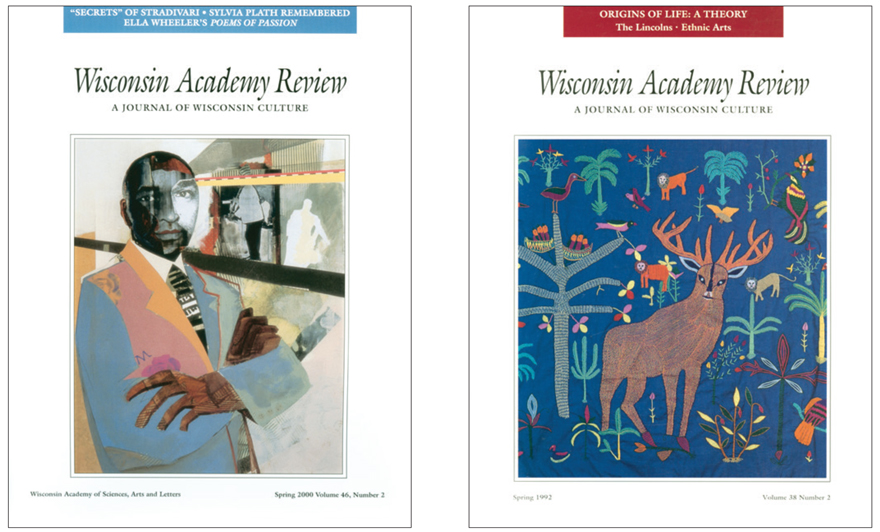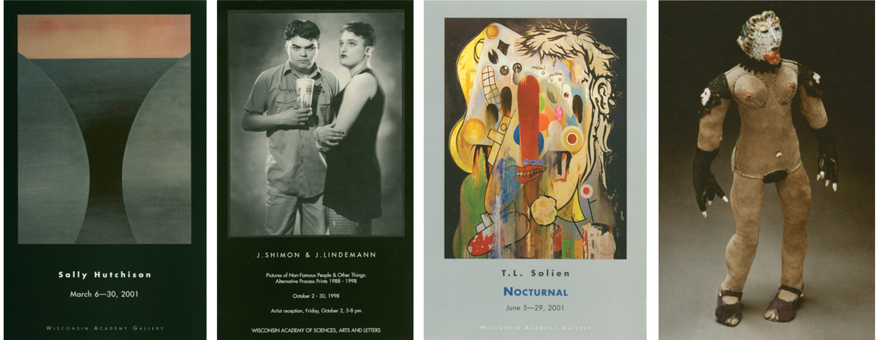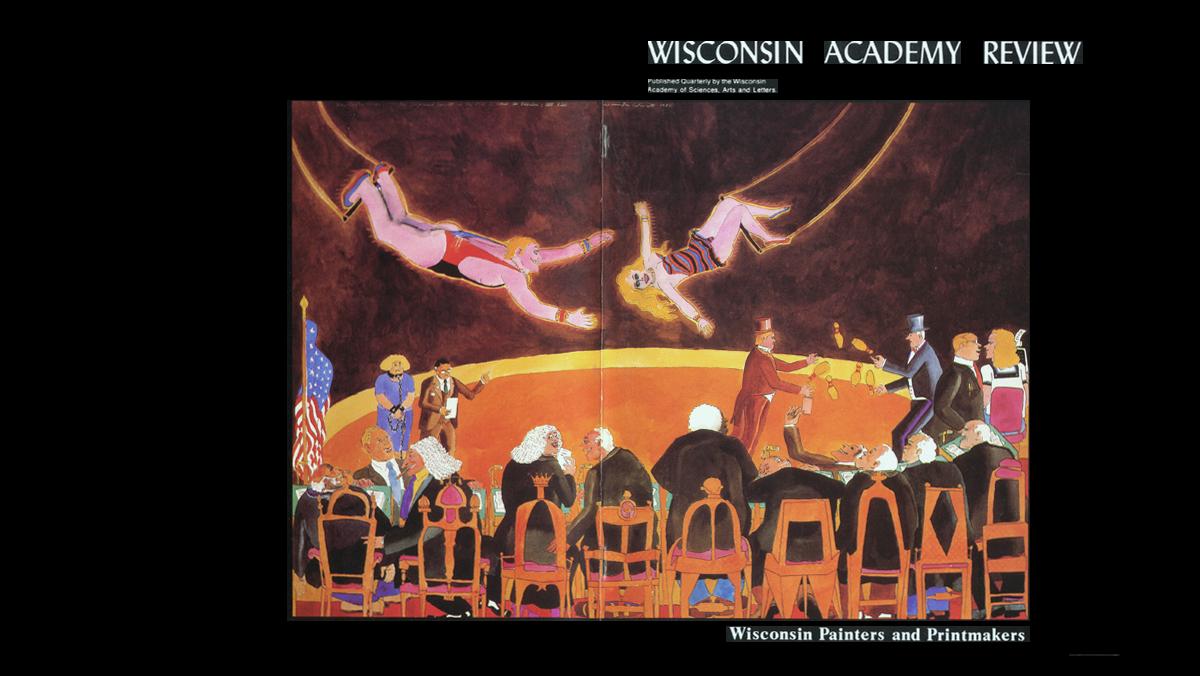While cocooned at home during this coronavirus pandemic, I have spent hours on my laptop engaging with art. I’ve raised a glass at online receptions, tuned into social media for studio tours, explored the digital collections of the Rijksmuseum and the Forbidden City, and visited dozens of virtual exhibitions. Just keeping up with local online arts activity is a challenge, never mind what’s happening in Detroit or Shanghai.
While immersing myself in virtual art has truly been a lifeline, more than anything it reminds me of what is missing from the digital realm. I miss standing before a large painting or print, engulfed in a wash of color, or slowly walking around a sculpture, sensing its gestural push and pull. I miss the grain of wood, the tooth of paper, the dense gloss of varnish and enamel. I miss the play of light and shadow, and the seductive call of a work of art from across the room. The technical wizardry of a 360-degree VR video just can’t match the rich sensory experience of sharing space with art.
The pandemic also has me thinking about the fragility of small regional galleries, museums, and art centers, and how easy it is to take them for granted. These places form the backbone of local art communities. Yet they are tenuous institutions, especially in a state like ours, where public arts funding is so thin on the ground.
I’ve worked at the Academy’s James Watrous Gallery for over a decade, but until recently I hadn’t really appreciated the long years of advocacy, fundraising, and hard work that led to its 2004 grand opening at Overture Center for the Arts. I spent much of the last year knee-deep in the Academy’s archive, researching the history of this remarkable organization in preparation for our 150th anniversary exhibition, Collections & Connections. This project gave me great respect for the many dedicated Academy members and supporters who never gave up on the arts.

Most state academies are devoted to the sciences alone; only Wisconsin’s, Michigan’s, and Utah’s include the arts and letters as well. But while the Wisconsin Academy’s founders appear to have felt strongly about this interdisciplinary principle back in 1870, in actuality the organization saw virtually no art activity for nearly a century. To be fair, the Academy’s founding directive for “the encouragement of the fine arts and the improvement of the public taste” leaves a lot of room for interpretation. Still, while a number of Academy members were instrumental in shaping the Milwaukee Public Museum and State Historical Museum, there’s nothing to suggest direct Academy support for art in museums or anywhere else for many decades.
It took nearly eighty years after its founding for the Academy to give more than lip service to the arts. The lack of activity is partly because for the first one hundred years the Academy was a learned society without an office or any space where art could be displayed. Walter and Trudi Scott, who launched and edited the Wisconsin Academy Review (today’s Wisconsin People & Ideas) from 1954 to 1963, made a point of including short notices about the arts and recruited the artists Aaron Bohrod and Frederick Logan to select cover images for the quarterly magazine. Although Bohrod fretted that it was hard to find “good paintings of a vertical nature” to fit the Review’s format, he and Logan selected work by significant figures like Robert Grilley, John Wilde, Gibson Byrd, Warrington Colescott, and Santos Zingale, as well as art educators from around the state and amateur painters associated with the Wisconsin Rural Arts Program.
Unfortunately, the Scotts’ efforts to publish art ended when a new editor took over the magazine in 1963. In those days, the Academy was still an all-volunteer organization, and expanding its work and its audience were goals that always seemed just out of reach. It wasn’t until the early 1970s, after a generous bequest made it possible to buy an office building and hire a small staff, that new pursuits could take root.
Throughout the next decade, the Academy bubbled with fresh activity. James Batt, its first executive director, was determined to “breathe new life into the arts and letters.” He had the enthusiastic backing of Academy Board member Robert Gard, who had long been a strong proponent for an inclusive, democratic approach to the arts. With their leadership, the Academy embarked on an ambitious series of public lectures and conferences, produced a “Wisconsin Arts Report” for Wisconsin Public Radio, and developed a series of art and creative writing programs for high school students around the state. The Academy also began to host art exhibits in its new office building, a modest structure on University Avenue near the UW–Madison campus.

It’s hard to imagine how Batt squeezed them all in, but the first exhibit in the Academy’s small lobby included one hundred wood engravings by Frank Utpatel, a Mazomanie artist best known for his illustrations of H.P. Lovecraft’s novels. Many of the exhibits Batt organized in those early years appear to have developed through chance or personal connections. They became more systematic after 1976, when Gard enlisted Wisconsin Rural Arts Program director Mary Michie to organize a regular rotation of exhibits. Michie envisioned an artist-managed gallery for the Academy, and, although surviving records don’t describe how the exhibits were coordinated or artists selected, it’s clear that the space was in high demand. While its 1970s décor—textured earth-tone wallpaper, low shag carpet, and a large, polished brass chandelier—wouldn’t pass muster today, the Wisconsin Academy Gallery soon became a fixture of the Madison arts scene.
By 1979, artist Kay Hawkins had assumed the role of gallery coordinator, working closely with Pat Powell, the new editor of the Review. Powell initiated a series of art-themed issues, offering the magazine’s first in-depth coverage of the visual arts in almost twenty years. With support from artists John Wilde and Warrington Colescott, who were on the Academy’s board, Powell’s focus on art infused the gallery program with new energy. Wilde, Colescott, Hawkins, and Powell joined with Margaret Rahill, Bill Weege, and Joseph Bradley to form the first official gallery committee. One of their first orders of business was to commit to a monthly rotation of exhibits and a formal application and jury process. They also began hatching plans that would take curated shows beyond the walls of the Wisconsin Academy Gallery.
Their first project was the 1983 exhibition Wisconsin Painters and Printmakers, curated by artist Marylou Williams. Featuring work from forty celebrated Wisconsin artists, it was the Academy’s most ambitious art project to date—and it was far too big for the small gallery in the Academy’s lobby. Instead, Wisconsin Painters and Printmakers opened at Beloit College’s Wright Art Center, which hosted the Academy’s annual meeting that same year. The exhibit then traveled to the Memorial Union at UW–Madison, the Charles Allis Museum in Milwaukee, and UW–Platteville’s art gallery.
By 1985, the gallery committee had expanded to include representatives from around the state, adding Jane Brite, Janet Ela, John Mominee, and Alex Vance, along with stalwarts Williams, Hawkins, and Powell. This group initiated a second traveling exhibit called Wisconsin Survey: 3–D Art Today, which featured the work of another forty artists. Again too large for such a small venue, the second group show took a seven-venue tour of Madison, Neenah, West Bend, La Crosse, Platteville, Green Bay, and Manitowoc while the Wisconsin Academy Gallery continued to showcase works by a new artist every month. As someone who has been organizing exhibitions for many years, I can attest that shipping, installing, and promoting these traveling shows was a monumental undertaking, especially for a small group of volunteers.

Members of the gallery committee also turned their attention to renovating the Academy’s gallery space, which sorely needed a makeover. To raise the funds, John Wilde donated a series of prints, and Nancy and Robert Burkert created posters for sale. In addition, three donated works from the curated Wisconsin Masters exhibitions were auctioned off. By late 1986, the Academy had raised enough money to install new track lighting, and, within a few years, clean white walls and new carpet replaced the textured wallpaper and low shag. By establishing a regular exhibition schedule, consistent arts coverage in The Academy Review, and a greatly improved gallery space, these vigorous committees built a solid reputation for the Academy as a trusted resource for cutting-edge Wisconsin art.
In the early 1990s, painter Sally Hutchison assumed the role of gallery coordinator; by 1995, she was billed as co-director with another painter, Randall Berndt, who soon took a leading role. During this period, the gallery began hosting curated exhibits on historic art and architecture, including a retrospective of illustrator Maginel Wright Barney, an exhibit on Frank Lloyd Wright and Japanism, and two exhibitions of historic maps from the collection of the late George Parker. The gallery also continued its focus on solo shows, and, despite a desperate shortage of parking and lack of signage, its reputation for excellence attracted a steady stream of visitors. The long list of artists who’ve exhibited in the Wisconsin Academy Gallery comprises a virtual who’s who of contemporary Wisconsin art: Carol Emmons, Charles Munch, Sonya Clark, John Hitchcock, Martha Glowacki, and Leslie Vansen, to name just a few.
I became a regular visitor to the Wisconsin Academy Gallery soon after I arrived in Madison, and I was consistently surprised and impressed by the caliber of work on view in such an unassuming space. In 2004, it was a deep pleasure to witness the new team of Martha Glowacki and Randall Berndt translate the Wisconsin Academy Gallery’s program into a format suited to the new James Watrous Gallery, and to watch it blossom in its new home at Overture Center for the Arts. A long-time professor of art history at the University of Wisconsin–Madison, James Watrous was a respected printmaker and muralist, as well as a driving force behind the university’s Elvehjem Museum (now the Chazen). The gallery was dedicated in his name and takes inspiration from a lifetime of providing encouragement and opportunity to Wisconsin artists.
With its hardwood floor and wide, curving windows, James Watrous Gallery may be more elegant than the tan wallpaper-and-shag rug space of the past, but our mission to bring people together to explore and celebrate Wisconsin art remains much the same as it was decades ago.
There’s no end to the exciting work created by Wisconsin’s artists, and we plan to continue to share their works with audiences for years to come. It will be a great day when we once again can open the doors of the James Watrous Gallery to visitors ready for that full-on, sensory experience of art.




